If you are curious about China, how can you miss this 10-day China escorted tours? This trip covers Shanghai, Suzhou, Hangzhou, Guilin, Yangshuo, and Beijing and will last 10 days. The China escorted tour from Shanghai will impress you with sightseeing in Jing’an Temple, and shopping in Nanjing Road. Suzhou and Hangzhou are the following cities you will visit after Shanghai. Then, you will also take an escorted tour to Guilin, and your local tour guide will take you to cruise the Li River, which is a must-see in Guilin. This China escorted tour ends in Beijing. In Beijing, your tour guide will take you to visit the symbol of China, Tian’anmen Square. And you could learn Chinese history when you visit the Forbidden City and the Great Wall. Besides, you will also have a chance to enjoy local delicious food. If you are interested in this trip, please let me provide more details for you. The authentic China is waiting to be explored!

Welcome to Shanghai! After arrival, your local tour guide will receive you at the arrival hall and take you to the hotel. Then your Shanghai escorted tour will begin. On your way to the hotel, your local tour guide will introduce this metropolis to you. Shanghai is located at the mouth of the Yangtze River, and the Yangtze River Delta includes Shanghai City, Zhejiang, Jiangsu, and Anhui Provinces, which is the most developed area in China. With a total area of 6340.5 square kilometers, Shanghai has a population of 24,870,900 as of 2020. When you travel to Shanghai, you will find it’s an energetic city.
After a delicious breakfast, you will go to Jing’an Temple in Jing’an District. Jing’an Temple is one of the famous ancient temples in Shanghai. According to legend, it was built in the Three Kingdoms Period (220-280). The original temple was built on the riverbank. In 1216, the temple was in danger of collapsing for being lashed by the river day and night. Therefore, the abbot Zhong Yi moved it to the present temple site. Until now, the temple has been preserved well. There is a Peace Bell still hung here, with a height of 3.3 meters, a diameter of 2.1 meters, and a weight of 7.3 tons. Besides, there are numerous Buddhist relics collected here, such as famous scriptures, tablets, calligraphy and paintings. If you are interested in Chinese Buddhism, the Jing’an Temple is the best choice for you.
Then you will go to Yu Garden (closed each Monday), which is located in the center of Shanghai. As a classical garden in the south of the Yangtze River, it was built in the Ming Dynasty (1368-1644) and covers an area of more than 20,000 square meters. Built by Pan Yunduan who was an official in the Ming Dynasty, Yu Garden was designed as a gift for Pan’s father to enjoy his late life. This garden is decorated many delicate buildings, ponds and rocks, such as the big rockery inside it. Here you will learn what ancient Chinese gardens were like.
After lunch, you will go to Shanghai World Financial Center, which covers an area of 14,400 square meters, with a total construction area of 381,600 square meters. This building has 101 floors above ground and 3 floors underground, with a height of 492 meters. The observation deck is located on the 100th floor of Shanghai World Financial Center, with a height of 472 meters. The high-altitude observation deck is a suspending sightseeing corridor with a length of about 55 meters, from which you will see the stunning city view along the Huangpu River . It will be an excellent experience for you.
Then you will move to The Bund at Huangpu District. Extending 1.5 kilometers, the Bund is a place with a large number of foreign buildings, including foreign banks, hotels, and newspaper offices. Now the Bund is a symbol of this metropolis as you can see. While if we take a glance at the history of Shanghai, this city was only a medium-sized county on the coast of the south of the Yangtze River 150 years ago, and the shipping industry here was underdeveloped. At that time, people didn’t need nor had the ability to build embankments along the Yangtze River, so most of the riverbanks except the Huangpu River’s (a tributary of the Yangtze River) were natural beaches. The Bund was originally a small road for boat tracker. After more than a hundred years of development, this place has become the most prosperous area in Shanghai.
After enjoying the beauty of the Bund, your tour guide will take you to the next stop, Nanjing Road, which is a famous pedestrian street located in the Huangpu District. Nanjing Road has a total length of 1033 meters and covers an area of over 3000 square kilometers. With its numerous kinds of shops, there are more than 1 million tourists at home and abroad every day. So you can enjoy shopping as well as the charm of this modern street by visiting some eminent stores, such as Yong’an Department Store. The Yong’an Department Store is a time-honored market where you can take some photos and buy some meaningful gifts for your relatives and friends, such as Chinese fans, cheongsam (the traditional Chinese cloth of women) and chopsticks.
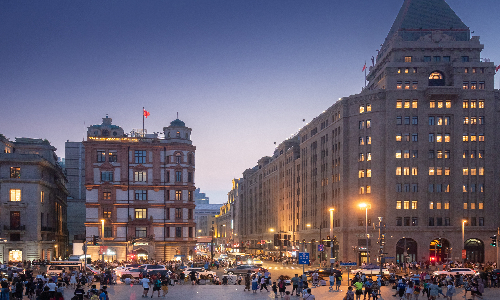
 Suzhou
Suzhou Today your trip to Shanghai will be over. After breakfast, you can pack luggage and go to the next destination, Suzhou, a city near Shanghai. We will drive west for about 2 hours to Suzhou, which is 100 kilometers from the downtown of Shanghai. On your way to Suzhou, you can have a rest or enjoy the scenery.
After arrival, you will first visit Lingering Garden, a classical garden in Suzhou. Built in the Ming Dynasty (1368-1644), this large-scale garden covers an area of 23,300 square meters and is famous for its delicate design and numerous strange stones. Speak of strange stones, the most impressive one is Guanyunfeng Stone, which is a unique product of Taihu Stone (a kind of limestone). It is 6.5 meters high, and weighs about 5 tons, ranking the first among Taihu Stones in gardens of Suzhou. If you come to visit Lingering Garden, the Guanyunfeng Stone can’t be missed.
Then you will go to Tiger Hill, which is located in northwest Suzhou. As an attraction with a history of more than 2,500 years, Tiger Hill was hailed as “the first mountain in Wuzhong Area (Suzhou and Hangzhou area in ancient time)”. With 34.3 meters above sea level and an area of 0.19 square kilometers, the hill is composed of Jurassic volcanic magma and rocks. Around it, there are many buildings and tourist attractions, including Han Han Spring which has a beautiful legend. Han Han, a monk in Liang Dynasty (502-557), suffered from eye diseases at that time, which is now called “cataract”. As the abbot in Tiger Hill Mountain pitied him, the abbot took Han Han as a water-carrying monk. But at that time, the road to carry water was very long. Once Han Han carried water through here, he felt tired and then took a nap. He dreamed that a monk told him there was a spring linked to the sea. When he woke up, he touched the land with both hands and felt some moss here. He knew that if there is moss, there must be water underground. So he begun to dig with a pole for about 7,749 days, and finally, a spring gushed out and cured his eyes. After that, the spring was named “Han Han Spring”. If you visit Tiger Hill, you will have great chances to learn about Chinese culture and appreciate picturesque natural scenery.
After lunch, you will go to Shantang Street. Shantang Street is named after Shantang River, covering 3600 meters. In 825, the poet Bai Juyi was ordered to serve as prefectural governor in Suzhou. Shortly after taking office, he went to Tiger Hill. When he saw that the nearby river was blocked and the waterway was impassable, he immediately consulted the relevant officials and decided to excavate a river around Tiger Hill and build a road. The dike beside a river was called “Shantang Street”. The excavation of the Shantang River and the construction of Shantang Street greatly facilitated irrigation and transportation, and this area has become a bustling market. Suzhou people are very grateful to Bai Juyi. After he left office, people called Shantang Street Baigong Dike and built Baigong Temple as a memorial, since in ancient times, if people called one man “gong”, it means this man was respected. So visiting Shantang Street, you will appreciate the beautiful scenery and have a deeper understanding of the achievements that Bai Juyi made here thousands of years ago.
Then your tour guide will help you check in at the hotel, and you can have dinner and rest here. After a whole-day visit, you may have a basic understanding of this city. There are 34 key national cultural relics protection sites and 73 well-preserved classical gardens in Suzhou. Besides, this beautiful city has a long history, which enriches its local culture. Now I believe you can understand that it is not only rich in beauty, but also culture. The next day will begin with another beautiful city.
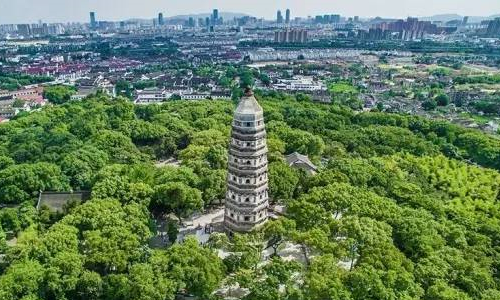
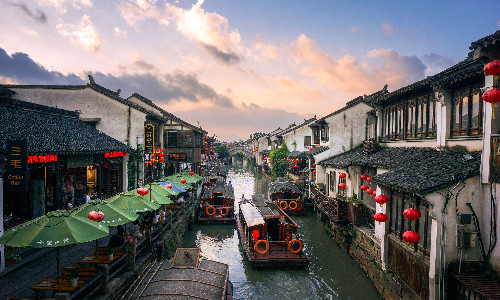
 Hangzhou
Hangzhou Today you will drive south for 2.5 hours to Hangzhou, which is 150 kilometers from Suzhou. After arrival, you will firstly visit West Lake in Xihu District. West Lake is surrounded by mountains on three sides. There is fresh air and beautiful natural sceneries which attract numerous tourists at home and abroad. With a length of about 3.2 kilometers from north to south, a width of about 2.8 kilometers from east to west, and nearly 15 kilometers around the lake, its lake surface area is about 6.39 square kilometers. The average water depth of West Lake is 2.27 meters, and the water capacity is about 14.29 million cubic meters. There are many famous attractions. For example, the Broken Bridge ranks first among the attractions of West Lake. Rebuilt in 1941, the Broken Bridge was famous for its beauty. In winter, the snow on half of Broken Bridge facing the sun melts, revealing a brown bridge deck as if the long white chain was interrupted here. It is a fantastic place to enjoy the beauty of West Lake. Besides, you can also take a cruise ship on the West Lake.
Then you will go to Lingyin Temple. With a history of about 1,700 years, it is the earliest famous temple in Hangzhou. It covers an area of about 87,000 square meters. The temple was restored on the basis of the temple built in the late Qing Dynasty (1636-1912). On the central axis of the temple, there are three main halls: the Hall of Heavenly Kings, the Main Shrine Hall, and Pharmacist Hall. Among them, Pharmacist Hall is one of the major halls with a length of about 20 meters and a width of about 12 meters. Sitting on the lotus pedestal in the hall, the pharmacist Buddha is also called “the great medicine king Buddha”. The Buddha could make all living beings happy, and help them relieve pain and be free from disease. The Sun Bodhisattva stands on the left side, holding a sun-like decoration in his hand, symbolizing the light; the Moonlight Bodhisattva stands on the right side, holding the moon-like decoration in his hand, symbolizing coolness. Visiting this temple will make you know more about traditional Chinese culture and Chinese Buddhism.
After lunch, you will visit Six Harmonies Pagoda, which is located on Yuelun Mountain, near the Qiantang River in the south of West Lake. In 970, Hangzhou was the capital of Wuyue Kingdom (907-978) at that time, and the king built Six Harmonies Pagoda under the suggestion of Zhiyuan, a monk who lived near the Qiantang River. Today’s pagoda was rebuilt in the Southern Song Dynasty (1127-1279). Geographically, Hangzhou is located on the north bank of the lower reaches of the Qiantang River, bordering Hangzhou Bay. At that time, when river tides hit the embankment, the crops and houses along the river were often flooded. So the king recruited a large number of migrant workers to build the Qiantang River seawall. The seawall was more than 100 miles long, and played an important role in reducing the harm of the disaster, and promoting the shipping industry. But pretty soon, the seawall was broken. Even if it was rebuilt, people are always nervous. At that time, the king believed in Buddhism, and Buddhism flourished all over the kingdom. People generally believed that Buddhism had the most power to suppress the Qiantang River. In order to reduce the chances of disaster, the king followed the advice of Zhiyuan, and built a pagoda here. When you come here, you will enjoy the grand building and understand the wisdom of the Chinese people.
Then your tour guide will take you to the hotel. As the capital of Zhejiang Province, Hangzhou has a history of more than 2,200 years. Because of its beautiful scenery, it is known as “a paradise on earth”. Thanks to convenient transportation, Hangzhou has been an important commercial center in history since ancient times.
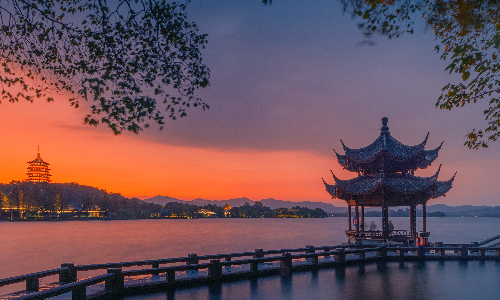
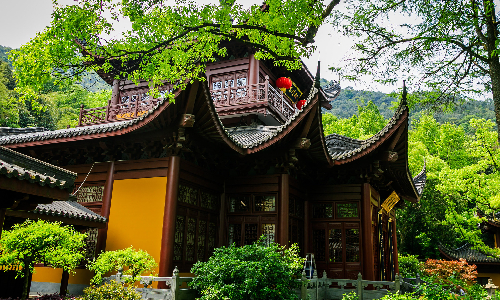
 Guilin
Guilin Today your trip to Hangzhou will come to an end. After breakfast, you can take your time to pack your luggage and buy some local foods to share with your friends and relatives. Then you will be transferred by your tour guide to the airport to take the estimated flight CA4645 10:05/12:25 to Guilin. After arrival, you will see your local tour guide waiting for you with a name sign and start your Guilin escorted tour.
In the afternoon, your tour guide will take you to visit Reed Flute Cave, which is located on the Peach Blossom River in the northwest of Guilin. There is a kind of reed grass at the entrance of the cave. Legend has it that it can be used as a flute to make a pleasant sound, from which it got its name. The Reed Flute Cave has been formed for a long time. One million years ago, it was originally an ancient underground lake. Due to crustal movement, the mountain rose and the groundwater level dropped, and the underground lake became a cave. Later, the groundwater formed by rainwater flowed along many broken zones in the mountain, dissolving calcium carbonate in rocks and turning it into carbonate and calcium ions. When groundwater flows from rock crevices to caves, carbon dioxide overflows, calcium ions precipitate and crystallize, and after years of accumulation, various stalactites are formed. People praise Reed Flute Cave as an art palace of nature.
Then you will go to Elephant Trunk Hill, which is located at the confluence of Taohua River and Li River in Guilin. As it looks like an elephant drinking water, hence the name Elephant Trunk Hill. At different times, it has different colors. In the morning, the Elephant Trunk Hill is green. At noon, the golden sunshine shines on the Elephant Trunk Hill, which dyes the Elephant Trunk Hill a yellow elephant. In the evening, the red lantern light shines on it, making it a red elephant. The main attractions of Elephant Trunk Hill include Water Moon Cave, Elephant Eye Rock, Puxian Tower, and Yunfeng Temple. Among them, the Water Moon Cave stands out. It is close to the river, and the water flows through it; while rocks stand in the water, which looks like an elephant trunk drinking water from the Li River. The scenery is excellent, and it has been a tourist attraction since Tang (618-907) and Song (960-1279) Dynasties.
Then your tour guide will take you to the hotel for a rest. On your way to the hotel, you can take some photos of this city.
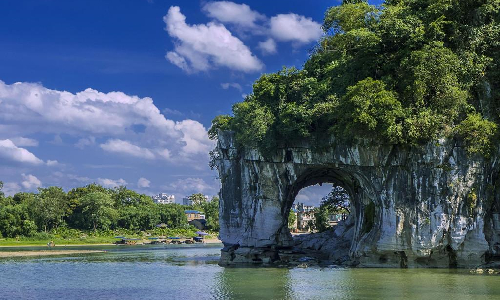
 Yangshuo
Yangshuo Guilin
Guilin Today you will drive southeast for about 1 hour to Mopanshan Wharf to take a 4-hour cruise to visit Li River. On the cruise ship, you can firstly enjoy beautiful views of the Li River. The 83-kilometer Li River section from Guilin to Yangshuo is the essence of the Li River. Standing on the cruise ship, you can see the fishes swimming in the water and water plants swaying in the water. Look into the distance and you may see a man climbing a mountain with a basket on his back. This is a local man who lives in the mountains going out to buy household goods. You may also see fishermen fishing not far away. With views like these, you'll feel like the 4-hour cruise has gone by in a flash. You will have lunch on the cruise ship. After lunch, you will disembark in Yangshuo.
In the afternoon, you will go to Yangshuo West Street, which is a pedestrian street in Yangshuo County. Located in the center of Yangshuo, the pedestrian street is about 8 meters wide and nearly 800 meters long. With a history of more than 1400 years, it is the oldest and most prosperous street and one of the important tourist attractions in Yangshuo. Many relics here are well preserved, including inscriptions, ancient temples, ancient pavilions, celebrities’ former residences, memorial halls, and other ancient buildings. In the early 1970s, western tourists showed great interest in the local simple and elegant dwellings, traditional culture, and folk customs. Since then, hundreds of thousands of overseas tourists have visited Yangshuo West Street for sightseeing and leisure every year. Some of them stay here for a few days, and some live here for a year or several years. Therefore, this street has become a “global street” where Chinese and Western cultures blend.
After dinner, your local tour guide will transfer you to the hotel in Guilin, where you can have a rest and prepare for the next trip.
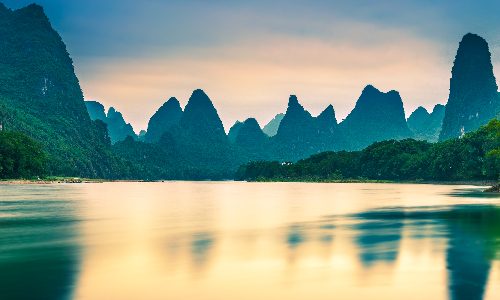
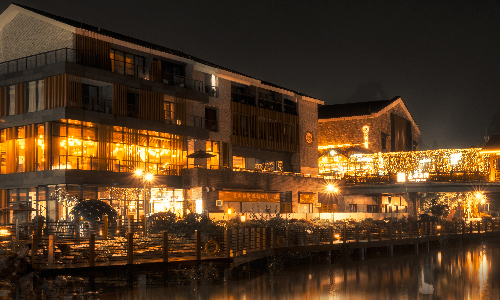
 Beijing
Beijing Today your Guilin escorted tour will come to an end. You will take the estimated flight HU7128 11:45/14:45. Then, your Beijing escorted tour will begin. When you arrive in Beijing, you will see your local tour guide waiting for you with a name sign at the airport. On your way to the hotel, your tour guide will provide you with a basic introduction to this city. As the capital of China, Beijing is a must-see for all tourists. There are more than 100 large and medium-sized shopping malls, enabling you to buy all kinds of goods here and choose some gifts for your relatives and friends.
Today you will start your tour in Beijing. After breakfast, you will first go to Tian’anmen Square, which is located in the center of this city. As a symbol of this time-honored city, Tian’anmen Square has witnessed many important events of this country. On October 1, 1949, the president personally pressed the button and raised the first five-star red flag, proclaiming the founding of the People’s Republic of China. On October 1, 1990, the National Flag Law was released, requiring that the national anthem must be played when raising the national flag, which made the flag-raising ceremony more solemn and grand. The flag-raising time depends on the specific sunrise time, generally from 5:00 to 7:00. Now the flag-raising ceremony in Tian’anmen Square is a tourism project designated by Beijing Tourism Commission. This ceremony is not included in this tour, but if you are interested in it, you could go to watch it by yourself.
Then you will go to the Forbidden City (closed each Monday), which is next to Tian’anmen Square. As an imperial palace, the Forbidden City covers about 720,000 square meters. At that time, the palace halls of the Forbidden City was required to be magnificent, symbolizing the supremacy of the feudal regime. Besides, in the center of the Forbidden City stands the Hall of Supreme Harmony, which was used to hold major ceremonies, like the emperor’s wedding. If you are interested in Chinese history and the traditional Chinese buildings, the Forbidden City is a must-see.
After lunch, you will visit the Temple of Heaven, a place where emperors of the Ming (1368-1644) and Qing(1636-1912) Dynasties worshipped heaven and prayed for a bumper harvest every year. The Temple of Heaven, the largest preserved building complex for worshipping heaven in China, is famous for its rigorous architectural layout, peculiar architectural structure, and magnificent architectural decoration. Covering an area of about 2.7 million square meters, it is divided into an inner altar and an outer altar. The main buildings are built inside the inner altars, such as the Hall of Prayer for Good Harvest and the Circular Mound Altar. These two buildings are connected by Red Throne Steps Bridge. The ancient cypresses in the outer altar are lush, which makes this place more beautiful.
Then you will go to the Summer Palace, a royal garden in the Qing Dynasty in the center of Beijing. It covers an area of about 3 square kilometers and has numerous attractions. Among these famous attractions, the Hall of Benevolence & Longevity, which is one of the main buildings in the residential area of the Summer Palace, stands out. Originally built in 1750, and rebuilt in 1887, this hall faces Kunming Lake (the main water area in the garden), which make it the best place to live in the Summer Palace. It is said that the Hall of Benevolence & Longevity is the place where electric lights were first installed in China, and its owner Empress Dowager Cixi (the real ruler in the late Qing Dynasty) is the first person to use electric lights.
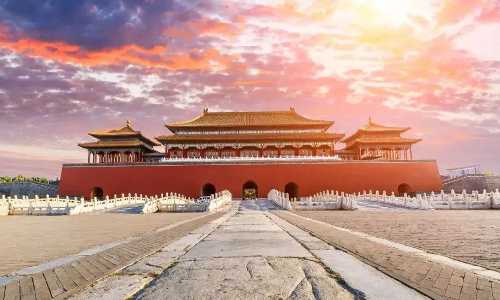
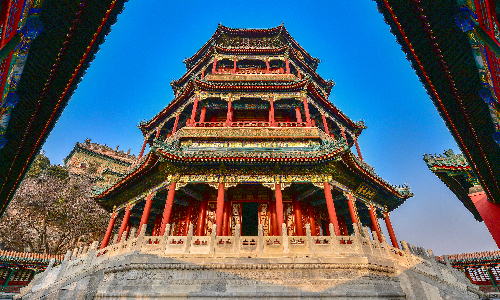
After breakfast, you will visit the Sacred Way in the Changping District. We will drive northwest for about 1 hour (45KM) to get there. With a length of 7.3 kilometers, the Sacred Way is the leading part of the Chang Tomb. As you walk along the Sacred Way, you will see a huge stone memorial archway. It is the first building on the Sacred Way, and is the earliest surviving and highest-ranking large stone archway of imitation wood structure in China. This stone memorial archway was built in the Ming Dynasty (1540) as a merit archway by Emperor Zhu Houcong of the Ming Dynasty to honor the achievements of his ancestors. It is 28.86 meters wide with five doors and six columns. The top of the archway is about 12 meters high. You will see more significant buildings here.
Then you will drive north for about 10 minutes to Chang Tomb, the first tomb of Ming Tombs. It covers an area of about 120,000 square meters and is the place where Emperor Zhu Di, the founder of the Ming Dynasty, and his empress were buried. The Chang Tomb is surrounded by mountains and rivers. It is a superb tomb according to Feng Shui. Feng Shui is the study of nature for the purpose of avoiding bad luck. Why does a tomb need to be good in Feng Shui? Because in China, it is believed that a family tomb affects the fate of the family and its descendants. In addition, in Chinese, the word 'Chang' means long. The owner of the tomb, Emperor Zhu Di, wanted Ming Dynasty to last a long time and be passed down from generation to generation.
After lunch, you will visit Juyongguan Great Wall. It is 22 kilometers away from Chang Tomb, so we need to keep driving west for about 30 minutes. The Great Wall was an ancient Chinese military fortification used to restrict the movement of enemy. The Great Wall is not just an isolated wall, but a defense system consisting of a wall and a large number of beacon towers, watchtowers, and garrisons. Because of the dangerous terrain, the Juyongguan Great Wall became an important defense project for the capital city of Beijing in ancient times. Standing on the wall, you will have a bird view of the mountain.
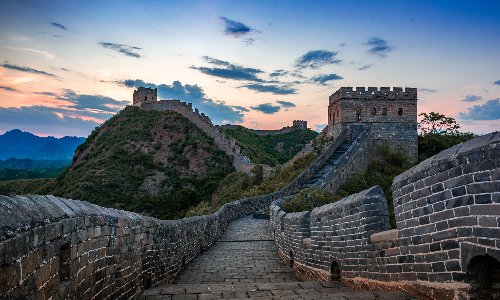
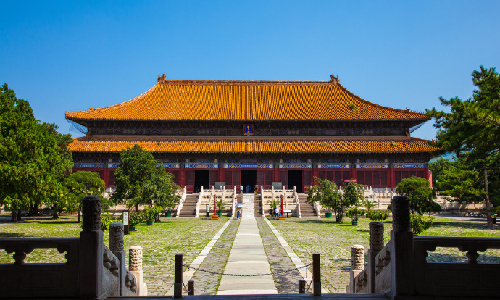
Toady your China escorted tour from Shanghai to Beijing will be over. After breakfast, your local tour guide will transfer you to the airport. Then you will take a flight to your sweet home. Have a pleasant trip!
Editor: Liu Shujun
Proofreader: Summer Hou
| City | Five Star hotel list | Four Star hotel list |
|---|---|---|
| Shanghai | Ocean Hotel Shanghai | Courtyard by Marriott Shanghai Central |
| Suzhou | Grand Trustel Aster Hotel Suzhou | Suzhou Jasmine Hotel |
| Hangzhou | Landison Plaza Hotel | Best Western Plus Meiyuan Hotel Hangzhou |
| Guilin | Lijiang Waterfall Hotel | Guilin Bravo Hotel |
| Beijing | Sunworld Dynasty Hotel Beijing Wangfujing | Sunworld Hotel Wangfujing |
 |
![]() About your child or infant, please contact us for a discounted price.
About your child or infant, please contact us for a discounted price.



We started with a few days in Beijing & ended in Shanghai, from where we visited the Forbidden City and Great Wall. In between we visited Terra Cotta Warriors Museum, Panda Base, Shanghai Disneyland.

We had a wonderful holiday in China which will remain long in the memory. China is a breathtakingly beautiful country full of splendid temples and palaces, mountains and rivers, peaceful rural scenes and bustling shopping streets.
 QUICK ENQUIRY
QUICK ENQUIRY